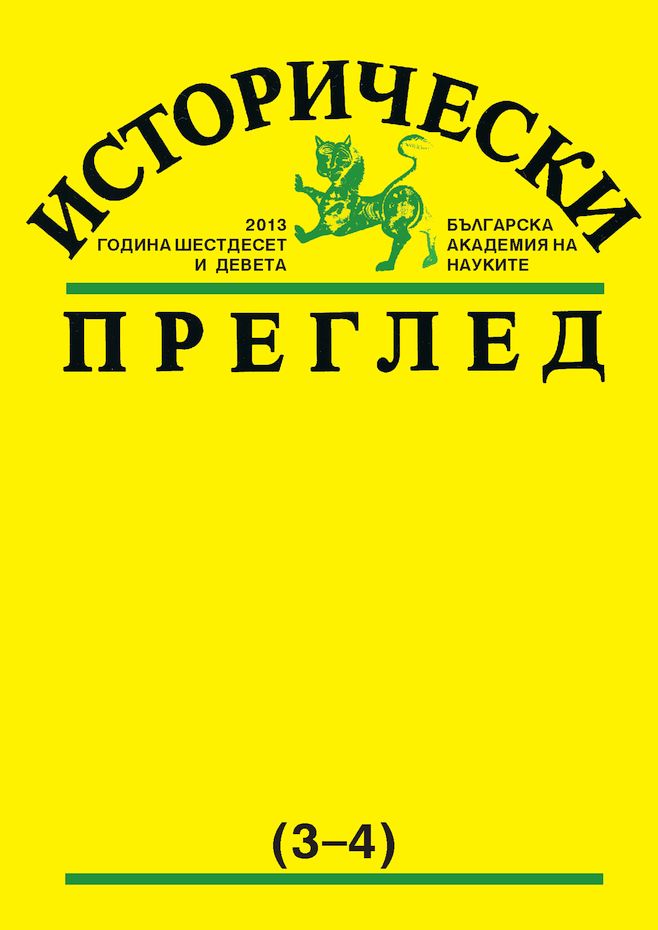Щрихи от дейността на пражкото академично дружество „Българска седянка“ в междувоенна Чехословакия (1919–1938)
The History of the Prague Academic Organization “Balgarska sedjanka” in Interwar Czechoslovakia (1919–1938)
Author(s): Krasimira MarholevaSubject(s): Cultural history, Political history, Social history, Pre-WW I & WW I (1900 -1919), Interwar Period (1920 - 1939)
Published by: Институт за исторически изследвания - Българска академия на науките
Keywords: Bulgarian Students organizations; cultural activities;
Summary/Abstract: Founded in 1880, the organization of Bulgarian students in Prague “Bălgarska Sedjanka” had served for many years as a “cultural bridge” between Czechs and Bulgarians. Through its cultural activities it highly contributed to disseminating Bulgarian culture among Czechs and, vice versa, the Czech cultural traditions among Bulgarians. While the earlier history of the student organization (1880s–1910s) were explored to a certain extent by both Bulgarian and Czech historians, its cultural activities during the postwar period (1919–1938) have been hardly touched at all, or these have been assessed through the prism of the Marxist ideology. The decade of 1930s has not been an object of research yet. Therefore, the current study explores the history of “Bălgarska Sedjanka” in interwar Czechoslovakia. It relies on archival sources, published documents, the Czech periodical press and secondary literature available on the subject. The study focuses on several issues –the cultural activities of the organization, its relationship with the Bulgarian embassy and with some other Bulgarian organizations in Prague. One might characterize the early 1920s as a period in which the leadership of “Bălgarska Sedjanka” made constant efforts to overcome the isolation in which Bulgarian society found itself after the end of the WWI. For this purpose the organization initiated cultural events in Prague (public lectures and evening celebrations), closely cooperating with leading Czech (Vladislav Šak, Vladimír Sis, prof. Ivan Mrkvička) and Bulgarian (Christina Morfova, Kiril Christov) intellectuals as well as with Bulgarian ministers plenipotentiaries (Stefan Balamezov, Dimităr Michalchev, Boris Vazov, etc.). Furthermore, in order to improve Bulgaria's image in the Slav world, the leadership of the student organization strove to establish close cooperation with Southern Slav students in Prague. The relationship of “Bălgarska Sedjanka” with the Bulgarian embassy in Prague was marked both by cooperation and conflicts during the period in question. For example, the troublesome events in Bulgaria in 1923 brought about tense relations between the Bulgarian diplomats and the organization. Also, these events resulted in an open split within “Bălgarska Sedjanka” and in the establishment of the leftist organization “Narstud”. Last but not least, “Bălgarska Sedjanka” strove to keep alive the Bulgarian cultural traditions and the memory of the historical past among Bulgarian students in Prague through commemoration of glorious events of Bulgarian history and of Bulgarian “dead heroes”(Christo Botev, Ivan Vazov). In doing this, “Bălgarska Sedjanka” closely cooperated with another organization in Prague called “Československo-bulharskávzájemnost”.
Journal: Исторически преглед
- Issue Year: 2013
- Issue No: 3-4
- Page Range: 109-132
- Page Count: 24
- Language: Bulgarian
- Content File-PDF

